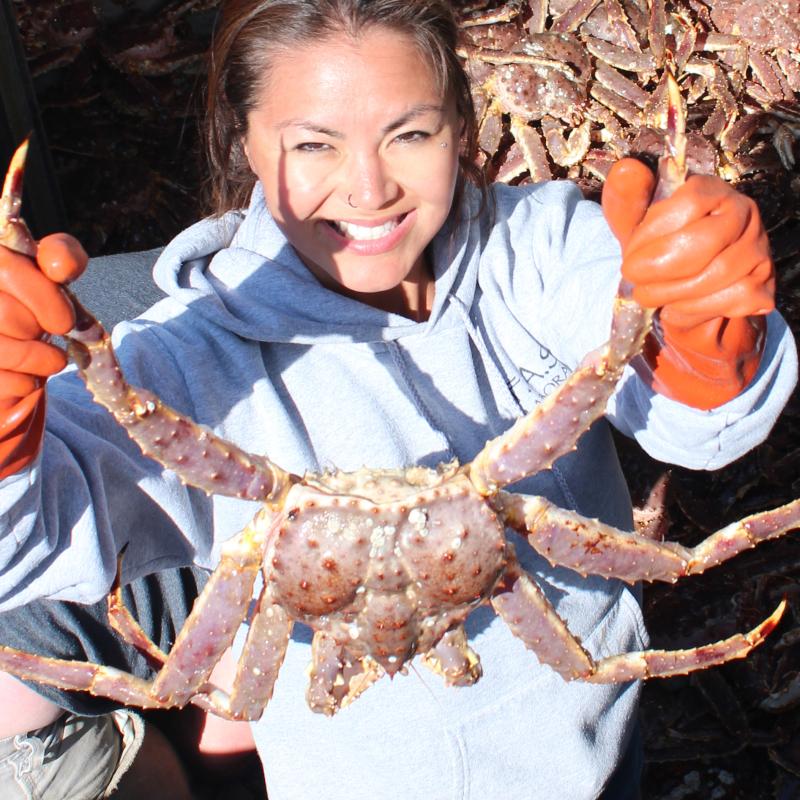Aaasrigaa, taikuu (Inupiaq Eskimo, translated: very well, thank you) for the progress and achievements that have been made to recognize Native Americans. November is Native American Heritage Month, where we celebrate both American Indian and Alaska Natives, but I would also like to recognize our counterparts including those in Hawaii and other island communities not Federally-recognized as Tribal members.
In recognition of Native American Heritage month, I would like to reflect on the challenges of the past and the pathway that led to my current position.
The history of Alaska Natives following contact with Western society has been tragic, marked by the ravages of disease through communities and the perils of assimilation. Diseases such as measles, tuberculosis, and influenza – relatively unknown to Alaska Natives – killed about 75% of the 100,000 inhabitants and created over 10,000 orphans (late 1800s - early 1900). Those that survived would eventually face the misfortunes of assimilation. One strategy of assimilation forced children out of their villages to attend boarding school hundreds of miles away in a foreign environment. In addition, Alaska Native students were not allowed to speak their Native languages, and were punished if they did. This became a problem because when they would return home from school speaking a different language made it difficult to communicate with their families and communities. In addition to the language barrier, these students were taught needless skills which were not practical or useful in their daily lives such as brick building. In these schools, children also were taught to be ashamed of their cultures.
American Indian and Alaska Natives shared unique historical challenges; though, they also share success. In Alaska, Native advocates challenged Congress and triumphed at the largest Indigenous land claims settlement in United States history known as the Alaska Native Claims Settlement Act (ANSCA) of 1971. The passage of ANSCA reallocated 44 million acres of traditional land and established 12 regional corporations and over 200 village corporations. After all, their close relationship to the land is what identifies and defines them.
ANCSA significantly impacted the past, present and future for those shareholders and Tribal members even on a personal level. For me, it was an educational journey. These resources gave me the opportunity to pursue studies in college, even as a non-traditional student. I was a mom of three and oftentimes, they’d attend classes with me. My kids were raised in the Fisheries, Aquatics Science and Technology Lab as I worked on data analysis. They would later even attend my Thesis defense. The lab was where they learned to not only learn about what mom was working on late at night but also where they learned to ride bicycles in the halls on campus in mid-winter.
My experience with ANSCA put me on the path that got me where I am today. It provided the support that enabled me to earn a Bachelor of Arts in Sustainability Studies and a Master of Science in Environmental Science, both from Alaska Pacific University in Anchorage. In my professional work, I led a collaborative study examining marine gold mining and effects on important structural habitat for juvenile red king crab in Norton Sound. I have also managed a collaborative initiative between the Bering Sea Elders and a Bering Sea commercial fishing fleet in Kuskokwim Bay.
As of a year and a half ago, I have had the privilege to work as Alaska Fisheries Science Center’s first Tribal Research Coordinator to identify research needs and to more effectively communicate with and design collaborative research projects with Alaska Indigenous communities, Tribal governments, and Alaska Native organizations – a new and unique position.
Creation of the Tribal Research Coordinator is an important acknowledgement that more coordination with Alaska Indigenous communities and organizations is needed and valued in conducting and producing the best possible science.
We must never forget our difficult past. We have much work still to do, but the professional opportunities I have earned and the work that we are doing together is also a reminder of how far we've come.
With that, I would like to pay tribute to everyone’s Ahnas (grandmothers) and Taatas (grandfathers) that came before us who built pathways with their tenacity, strength, courage and endurance for success for us all.









